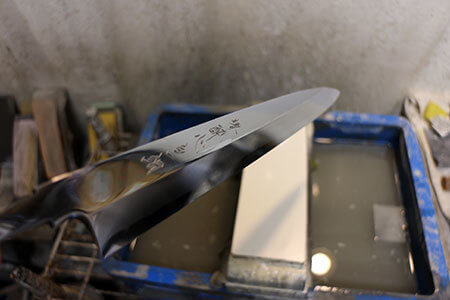Knives for Professionals and the Art of Honbazuke

I often see the phrase “for professionals!” used as a tagline for knives.
But what exactly does “for professionals” mean? When you think about it, it simply refers to something that can be used for work.
For knives, it probably comes down to three key points:
Sharpness
Edge retention
Ease of sharpening
When it comes to sharpness, any knife can be made sharp if you put in the effort to sharpen it. So, the real question is how much time it takes to get it sharp and the potential of the steel itself.
For edge retention, choosing the right steel and applying techniques like Hamaguri or Itohiki can make a significant difference. (You could also prioritize durability-focused sharpening.)
And for ease of sharpening, it’s all about selecting the right steel and blade structure. Pairing it with efficient whetstones is another way to make sharpening easier.
When a knife meets these criteria, it’s likely to perform well in a professional setting.
But here’s the catch!
When you start craving even better sharpness or become more aware of how smoothly the knife cuts through food, you begin to notice other aspects—like how much effort it takes to maintain that edge.
That’s when the hunt for a new knife begins. Should it be blue steel? Or white steel?
If smooth cutting performance is the goal, you’ll want a knife ground as thinly as possible. But if you want it thin and still durable, it must be forged exceptionally well.
If the edge doesn’t last, you can always resharpen it—but who has the time for that? (Lol.)
From the conversations I’ve had with chefs, most seem to prefer minimizing sharpening as much as possible.
So, what makes a knife truly “for professionals”?
I think it’s one that feels great to use—a knife that works exactly as you want it to.
That said, a knife that’s too sharp isn’t always ideal either. The best knives are those that deliver the exact cutting experience you’re looking for.
But since everyone has a different idea of what “feels right,” finding that perfect knife can be quite challenging…

And I think Honbazuke is probably the same way. It’s not about the knife being at the center of Honbazuke—it’s about the user being at the center. You could say it’s truly the “person’s sharpening” or, in a sense, the “original sharpening” for each individual!
- 2017-01-17





